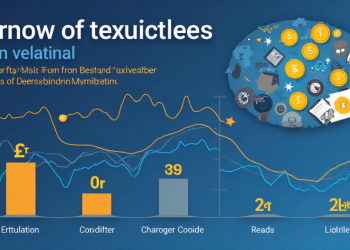In the ever-shifting world of cryptocurrency trading, moving averages (MAs) serve as indispensable tools for traders seeking to decipher market trends and make informed decisions. These indicators smooth out price data, allowing traders to identify underlying trends amidst the noise of daily price fluctuations. However, the volatile nature of crypto markets necessitates a nuanced understanding and strategic application of MAs.
Understanding Moving Averages: The Basics
A moving average is a statistical calculation used to analyze data points by creating averages of different subsets of the full data set. In the context of trading, MAs help smooth out price data to identify trends over a specific period. There are two primary types of moving averages:
- Simple Moving Average (SMA): This calculates the average of a set of prices over a specified number of periods.
- Exponential Moving Average (EMA): This gives more weight to recent prices, making it more responsive to new information.
Traders often use these MAs to identify potential buy or sell signals. For instance, a “golden cross” occurs when a short-term moving average crosses above a long-term moving average, signaling a potential upward trend. Conversely, a “death cross” happens when a short-term moving average crosses below a long-term moving average, indicating a potential downward trend.

The Role of Moving Averages in Crypto Trading
In the crypto market, characterized by its inherent volatility, moving averages play a crucial role in helping traders:
- Identify Trends: By smoothing out price data, MAs help traders determine whether a cryptocurrency is in an uptrend, downtrend, or moving sideways.
- Generate Trade Signals: Crossovers between different MAs can indicate potential buy or sell opportunities.
- Determine Support and Resistance Levels: MAs can act as dynamic support and resistance levels, aiding traders in setting entry and exit points.
- Reduce Market Noise: By filtering out short-term price fluctuations, MAs provide a clearer picture of the market’s direction.
For example, the 50-day and 200-day moving averages are commonly used to assess the overall trend and potential reversal points in the market.
Challenges and Considerations
While moving averages are valuable tools, they are not without limitations:
- Lagging Indicator: Since MAs are based on past prices, they may not react swiftly to sudden market changes, potentially leading to delayed signals.
- False Signals: In choppy or sideways markets, MAs can produce false signals, leading to potential losses.
- Overreliance: Relying solely on MAs without considering other indicators or market factors can result in missed opportunities or increased risk.
To mitigate these challenges, traders often combine MAs with other indicators, such as the Relative Strength Index (RSI) or Moving Average Convergence Divergence (MACD), to confirm signals and enhance decision-making.
Practical Application: A Case Study
Consider the recent performance of Bitcoin, which has experienced significant price movements. Technical analysis indicates that Bitcoin’s price has been following a rising wedge pattern, potentially foreshadowing a reversal due to declining volume and overbought signals. However, a “golden cross” pattern—where the 50-day moving average crosses above the 200-day moving average—suggests continued upward momentum. Traders are closely monitoring these indicators to assess potential entry and exit points.
Conclusion
Moving averages are fundamental tools in cryptocurrency trading, offering insights into market trends and potential trade opportunities. However, their effectiveness is enhanced when used in conjunction with other indicators and a comprehensive understanding of market dynamics. By integrating moving averages into a well-rounded trading strategy, traders can navigate the complexities of the crypto market with greater confidence and precision.
Author’s Bio:
Alex Morgan is a seasoned cryptocurrency market analyst with over a decade of experience in technical analysis and trading strategies. With a background in financial engineering and a deep understanding of blockchain technologies, Alex provides insights into market trends and trading methodologies, helping traders make informed decisions in the ever-evolving crypto landscape.
















